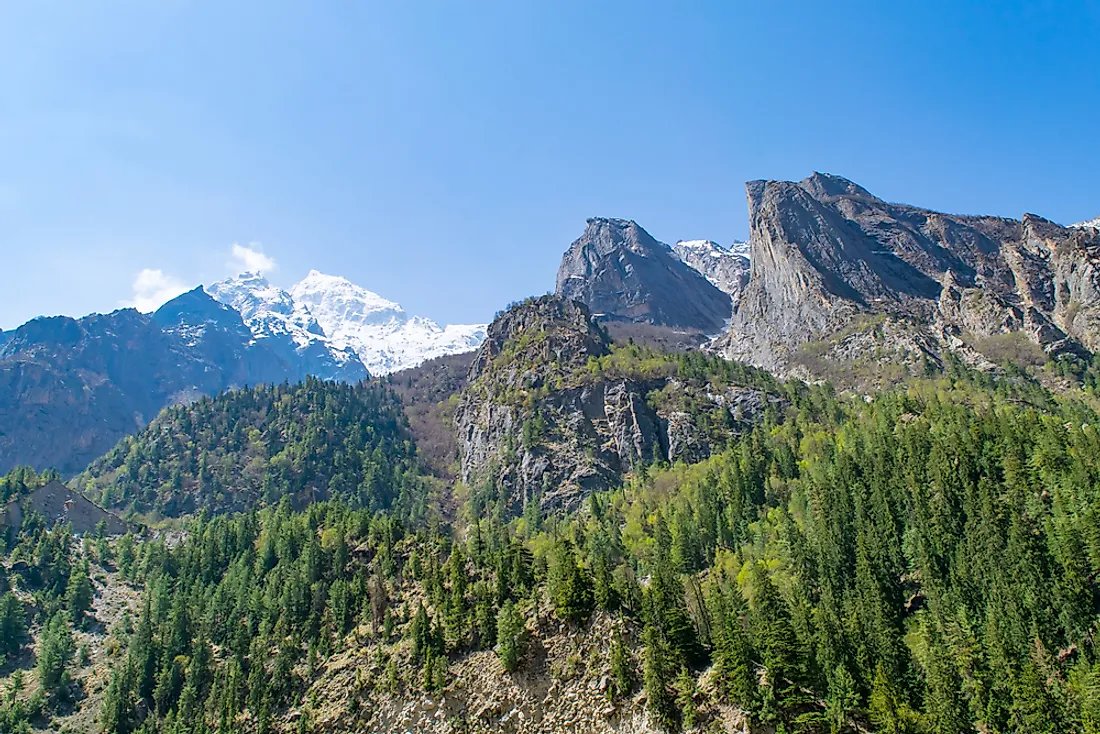What Is Altitudinal Zonation In Ecology?

First, altitudinal zonation occurs in hilly regions. It refers to the natural layering of different ecosystems that occur at dissimilar heights as a result of diverse environments due to the differing heights. Factors like temperature, soil composition, humidity, solar radiation, altitude, type of rocks, and disturbance frequency (like fire and monsoons) are responsible for the determination and occurrence of the zones. The zones are equipped to support several species of vegetation and animals. Alexander von Humboldt was the scientist who first theorized the concept of altitudinal zonation after noticing that temperature drops with increasing height. Basically, the zones are ecosystems that are suited to a particular species.
Factors Influencing Altitudinal Zonation
Temperature
It is common knowledge that an increase in height comes with a reduction in temperature. Most vegetation relies on high temperature to thrive. Consequently, varying temperatures will have a direct impact on the length of time that plants can grow. Temperatures that are too high or two low support very few species of plants. The most vegetation is found in the tropical regions. Most of the huge coniferous and deciduous trees grow there. Zones with similar conditions will have bigger vegetation and vice versa.
Humidity
Humidity refers to the amount of water in the atmosphere. Things like the levels of evapotranspiration and precipitation fall here. Precipitation accounts for the highest quantity of humidity in the atmosphere. As such, precipitation is most important in determining zonation. As warm moist air rises up the mountain side, it reaches a height where it condenses and forms precipitation like rain. The middle parts of the mountain receive the highest amount of rainfall. As such, most flora and fauna is located there as opposed to other regions. Higher regions of the mountain experience very low temperatures. Vegetation found there has to be specially adapted to the extreme temperatures. Same applies to the lower and hotter regions.
Soil Composition
The type of soil in a zone will obviously affect the type and size of vegetation living there. It is also common knowledge that most plants will thrive in zones with richer soils. Nutrients come from minerals in rocks and decaying vegetation or animals. Highly fertile soil means richer plant and animal life. Example, the zones in tropical areas have fewer plant species on the ground level due to undergrowth and dead leaves.
Biological Factors
This refers to simple Darwinism. Stronger species will kill weaker ones. The weaker ones can either adapt or migrate. Example, the adaptation of weaker trees by growing around the trunks of bigger ones. It is crucial to remember that this factor is difficult to prove but academicians agree that it’s a factor in zonation.
Solar Radiation
Most plants rely on the light from the sun to make food for their survival. Differing levels of sunlight lead to the creation of zones on the mountainside.
Massenerhebung Effect
This means that the physical location of the mountain should be taken into account while attempting to determine zonation. The effect expects that zonation on lower mountains may mirror those of higher mountains with the zonation belts occurring at equally lower heights.











